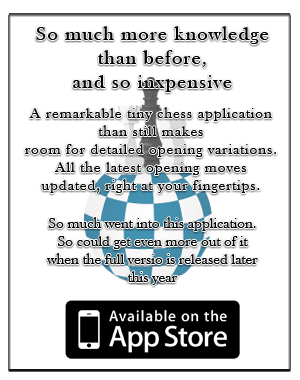EN PASSANT (e.p.)
From the French, “in passing.” Abbreviated e.p. One pawn can capture another e.p. if the capturing pawn has reached the fifth rank and the captured pawn is moved two squares forward on an adjacent file. The capture is made as though the opponent’s pawn had moved only one square forward. En passant move was first introduced in the second half of the 15th century then mentioned by Ruy Lopez in 1560, nevertheless, it gained universal acceptance only in the late 19th century. Solving a chess problem, passant capture as the first move is allowed only if a player can prove that it was the pawn to capture to have just been moved two squares ahead.



